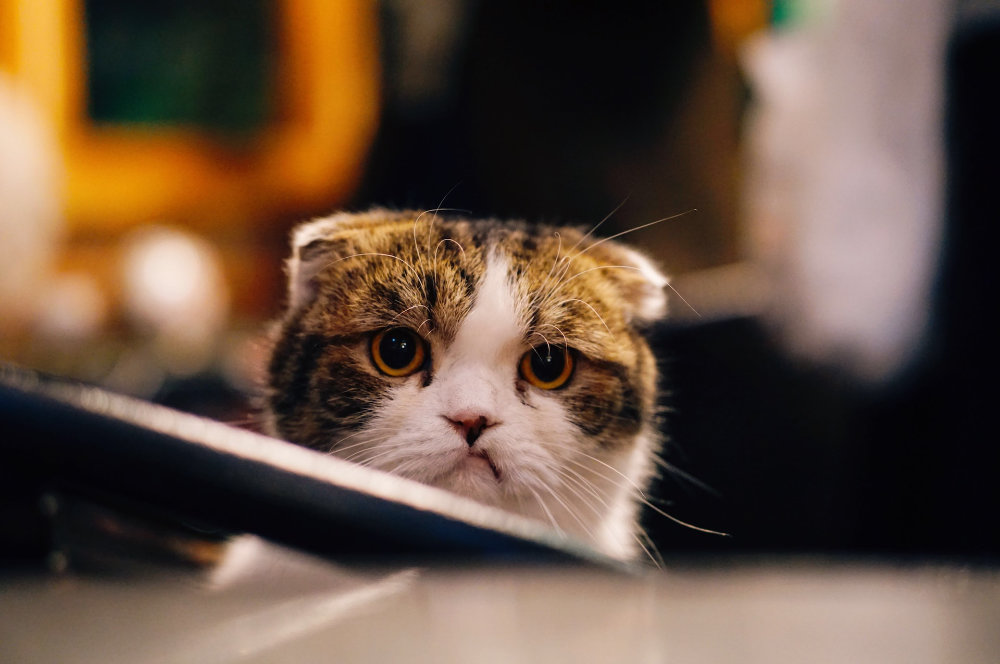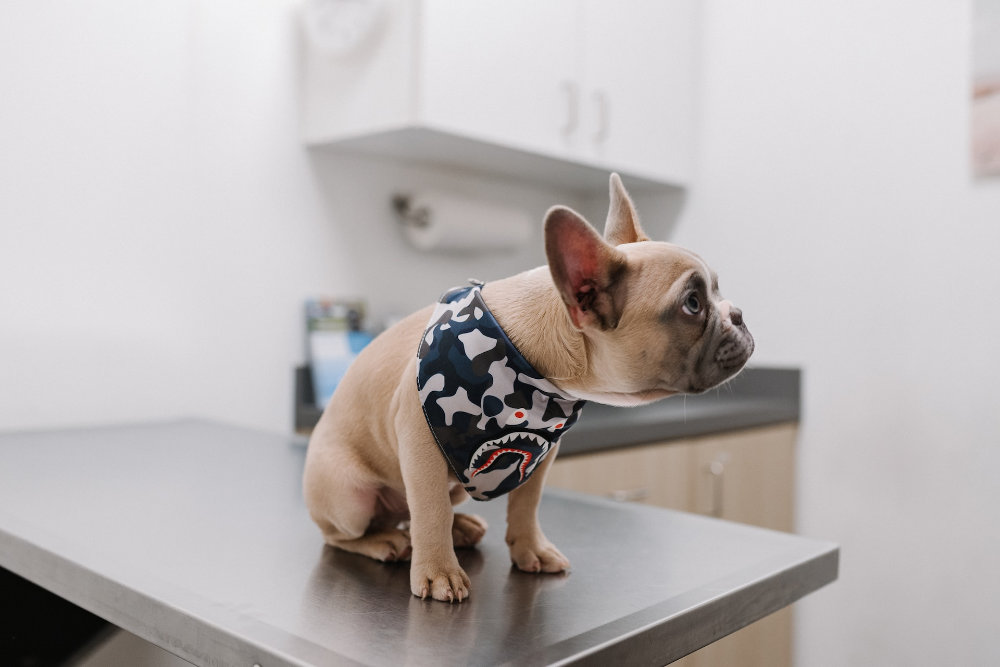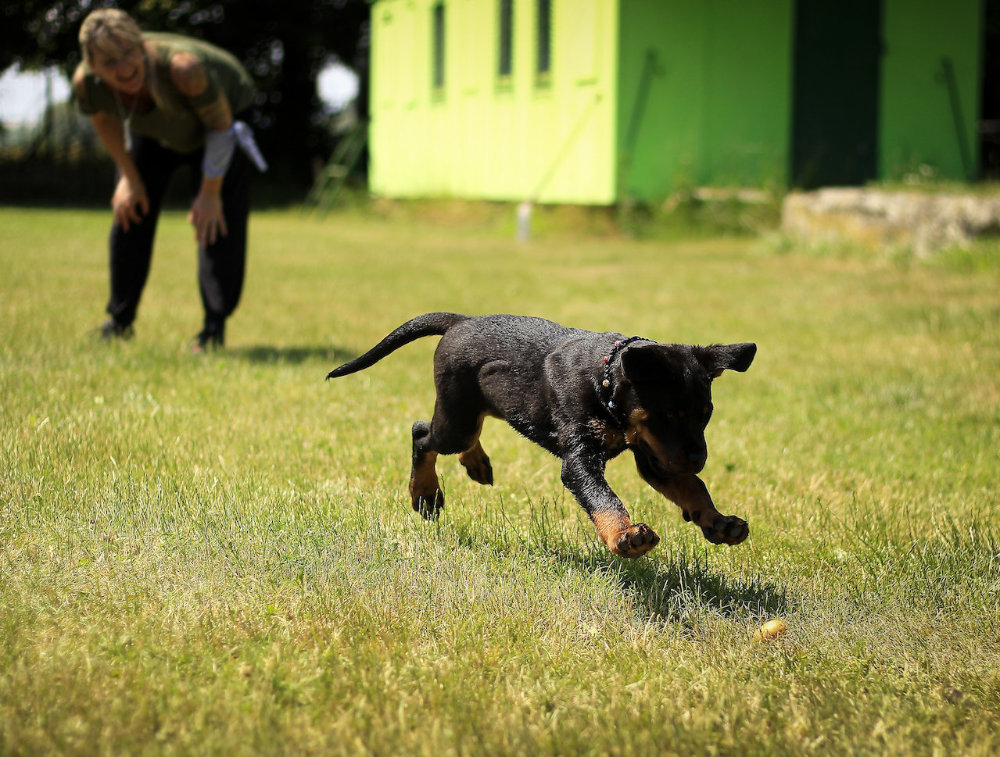Pet separation anxiety is a condition where a pet exhibits distress or problematic behavior when they’re separated from their primary caretakers or left alone for extended periods. This condition is especially common in dogs but can occur in any animal capable of forming strong emotional bonds with humans.
Impact of Pet Separation Anxiety
The impact of pet separation anxiety extends beyond the discomfort of the pet itself. For the pets, it often results in destructive behaviors, excessive barking or howling, self-harm, and house soiling. For pet owners, it can cause worry, and frustration, and can often lead to damaged property. The pet-owner relationship can also be strained, especially when the behavior is misinterpreted as defiance rather than a cry for help. Thus, it is essential to understand, recognize, and appropriately address pet separation anxiety for the well-being of both pets and their owners.
Understanding Pet Separation Anxiety
Pet separation anxiety can be triggered by various factors. For some pets, a traumatic event, such as a change in family structure, a move to a new house, or the loss of a family member, can spark anxiety. In other cases, pets with a naturally anxious disposition or those who have been adopted from shelters may be more susceptible to separation anxiety. Prolonged periods of isolation, abrupt changes in schedule, and lack of mental or physical stimulation can also contribute to the development of this condition.
Symptoms of Pet Separation Anxiety
Identifying the symptoms of pet separation anxiety is the first step toward managing it. These symptoms can include destructive behavior (like chewing furniture or scratching doors), excessive vocalization (such as barking or howling), accidents despite being house-trained, drooling or panting more than usual, changes in appetite, attempts to escape, and pacing. Notably, these symptoms usually occur when the pet is left alone and may persist until the owner returns.
Role of the Pet’s Environment in Causing Anxiety
The pet’s environment plays a significant role in influencing its mental state. A lack of stimulation, constant isolation, or significant changes in surroundings can lead to stress and anxiety in pets. This is why creating a calm, stable, and engaging environment is crucial in preventing and managing pet separation anxiety. Consistent schedules, comfortable living spaces, and plenty of mental and physical stimulation can significantly reduce a pet’s anxiety levels.
Commonly Affected Pets

While any pet can develop separation anxiety, certain species and breeds are particularly susceptible. Dogs, especially breeds like Labrador Retrievers, Border Collies, German Shepherds, and Jack Russell Terriers, are often more prone to separation anxiety. However, cats, birds, and even rodents such as rabbits and guinea pigs can also suffer from this condition.
Characteristics and Behaviors of Prone Pets
Certain characteristics and behaviors can indicate a higher likelihood of a pet developing separation anxiety. For dogs, these traits might include a history of abandonment or multiple owners, a lack of socialization during the critical early-life period, or an over-reliance on a specific individual. For other pets, like cats or birds, long periods of isolation, lack of environmental enrichment, or traumatic experiences can contribute to separation anxiety. Behaviors to look out for include excessive clinginess when the owner is present, distress as soon as the owner leaves, and excessively excited greetings upon the owner’s return.
The Role of a Veterinarian in Identifying Pet Separation Anxiety
It is critical to consult a veterinarian if you suspect your pet is suffering from separation anxiety. A professional assessment can provide a definitive diagnosis, distinguishing separation anxiety from other behavioral or medical issues that may cause similar symptoms. Furthermore, a vet can provide valuable advice on managing the condition and possibly refer you to a veterinary behaviorist for specialized help.
Role of Medical Tests in Identifying Separation Anxiety
While separation anxiety is primarily diagnosed based on behavior and history, veterinarians may also conduct medical tests to rule out any underlying health problems that could be causing or exacerbating your pet’s anxiety symptoms. For example, a urinary tract infection could be the reason for a house-trained pet suddenly urinating indoors. Similarly, certain neurological conditions might trigger unusual behaviors. By ensuring your pet is in good physical health, you can focus on managing separation anxiety effectively and appropriately.
Non-Medical Strategies to Manage Pet Separation Anxiety
- Gradual Desensitization: Gradual desensitization involves slowly getting your pet used to being alone. Start with short separations and gradually increase the length of time you’re away. Over time, your pet should become more comfortable with your absence. It is crucial, however, to proceed at your pet’s pace and not rush the process.
- Creating a Safe Space for Your Pet: Establishing a secure, comfortable area where your pet can relax during your absence can significantly reduce anxiety. This space, which could be a specific room or crate, should be filled with comforting items like your pet’s favorite toys, blankets, or beds.
- The Importance of Routines and Exercise: Establishing a regular routine provides a sense of predictability and security for your pet, reducing anxiety. This routine could involve consistent feeding times, walks, play sessions, and bedtime. Adequate physical exercise is also vital in managing separation anxiety, as it helps expend energy and promotes a calm state of mind.
- Use of Calming Toys and Distractions: Toys and puzzles can distract pets from the stress of separation, keeping their mind engaged while you’re away. Items like puzzle feeders, chewing toys, or even soft music can help make the separation period more bearable for your pet.
- Role of Mental Stimulation in Reducing Anxiety: Mental stimulation goes hand in hand with physical exercise in managing pet separation anxiety. Training exercises, interactive games, and mental stimulation toys help keep your pet’s mind sharp and focused, reducing anxiety and destructive behaviors.
Medical Treatments for Pet Separation Anxiety

Medication should be considered for your pet’s separation anxiety when non-medical interventions do not produce the desired results, or the anxiety is so severe that it’s affecting your pet’s quality of life. It’s crucial to have a detailed discussion with your vet before starting any medication.
Commonly Used Medications and Their Potential Side Effects
Commonly used medications for pet separation anxiety include selective serotonin reuptake inhibitors (SSRIs) like fluoxetine, tricyclic antidepressants such as clomipramine, and fast-acting anti-anxiety medications such as alprazolam. Side effects can vary but may include reduced appetite, lethargy, upset stomach, and increased anxiety levels in the initial stages. It’s important to remember that these medications often take a few weeks to show results and must be administered consistently.
The Importance of Working Closely with a Vet when Using Medication
Collaboration with your vet is vital when your pet is on medication for separation anxiety. This relationship allows for monitoring of side effects, adjustment of doses, and tracking of progress. It’s also essential to pair medication with behavioral modification techniques for the best outcome. Regular follow-ups with the vet will help evaluate the effectiveness of the treatment and make necessary adjustments.
Alternative Therapies for Pet Separation Anxiety
In addition to conventional treatments, various alternative therapies can also help manage pet separation anxiety. These include aromatherapy, where calming scents like lavender are used to soothe the pet; music therapy, where certain types of music are played to induce relaxation; and pressure wraps or anxiety wraps, which exert gentle pressure on the pet’s body, providing a sense of security.
Evidence-Based Reviews of These Methods
There is a growing body of research suggesting that these alternative therapies can effectively complement traditional treatments in managing pet separation anxiety. For instance, studies have shown that classical music can reduce stress in dogs, while certain essential oils have been found to have a calming effect on pets. However, it’s crucial to note that not all pets will respond in the same way, and what works for one pet might not work for another.
Integrating Alternative Therapies into Your Pet’s Routine
Integrating these therapies into your pet’s routine should be done gradually and carefully, observing your pet’s response at each step. For example, with aromatherapy, you can start by diffusing the essential oil for short periods while you are home, gradually increasing the duration, and then using it when you’re away. Similarly, for music therapy, start playing the music during calm, happy times to create a positive association, and then use it during your absence. Always consult with a vet before starting any alternative therapy.
Training Tips to Reduce Pet Separation Anxiety

Training methods for reducing pet separation anxiety primarily involve conditioning your pet to associate your departure with positive experiences and teaching them to be calm and content when alone. This can be achieved through techniques like counter-conditioning, where the pet is trained to associate being alone with good things, like a favorite treat.
Guidelines for Positive Reinforcement Training
Positive reinforcement training involves rewarding your pet for exhibiting the behavior you want. In the case of separation anxiety, this could involve rewarding your pet for staying calm when you leave the room or house. The reward could be a favorite treat, toy, or praise. It’s crucial to reward your pet immediately following the desired behavior to create a clear association.
Role of Professional Trainers and Behaviorists
Professional trainers and behaviorists can be immensely helpful when dealing with pet separation anxiety. These experts can provide tailored advice and training programs based on your pet’s specific needs. They can also guide you through the training process, helping you understand your pet’s behavior better and teaching you how to respond effectively. If your pet’s separation anxiety is severe or if you’re struggling to manage it on your own, don’t hesitate to seek professional help.
Coping Mechanisms for Owners
Seeing your pet struggle with separation anxiety can be stressful for you as an owner. It’s important to manage your own stress levels for your well-being and to create a calm environment for your pet. Practices such as mindfulness, meditation, and regular exercise can help alleviate stress. Remember that it’s okay to seek help and take time for self-care.
Importance of Maintaining Consistency
Consistency is key when dealing with pet separation anxiety. Maintaining a regular schedule and consistent training practices helps create a secure environment for your pet. Even though it might be challenging, especially when progress seems slow, it’s crucial to remain patient and consistent for the sake of your pet.
Resources for Owners
There are various resources available to help pet owners cope with the challenges of managing pet separation anxiety. Online forums, local support groups, and professional counseling can provide valuable advice, emotional support, and practical strategies. Remember, you’re not alone in this, and there’s plenty of help available. You can also consider consulting with a pet behaviorist or a vet for professional advice.
Case Studies of Successful Management of Pet Separation Anxiety

To provide a realistic perspective and inspire hope, let’s look at a couple of instances where pet owners successfully navigated the challenging terrain of pet separation anxiety.
Case Study: Bella, the Labrador Retriever
Bella, a two-year-old Labrador Retriever, started displaying signs of separation anxiety when her owner, Lisa, returned to work after a long period of working from home. Bella would whimper, pace, and eventually resort to destructive behavior like chewing on furniture whenever Lisa left for work. Recognizing these signs as symptoms of separation anxiety, Lisa consulted her vet and started implementing various strategies.
Initially, Lisa tried creating a safe space for Bella with her favorite toys and blankets. She also started a routine of exercise before leaving for work to help Bella expend her energy. Over time, Lisa also incorporated gradual desensitization into Bella’s routine, starting with short periods of absence and slowly increasing the duration. After several weeks of consistent training and patience, Bella began to show signs of improvement, exhibiting less distress during Lisa’s absence.
Case Study: Whiskers, the Domestic Cat
Whiskers, an adopted domestic cat, showed severe signs of separation anxiety shortly after his adoption. His owner, Mark, would find the cat excessively vocalizing and showing signs of restlessness whenever he would leave the apartment. Realizing that Whiskers was dealing with separation anxiety, Mark decided to seek professional help.
With the guidance of a professional pet behaviorist, Mark implemented a multi-faceted approach that included environmental enrichment, play therapy, and a regular feeding schedule. Mark also used a Feliway diffuser, which releases a synthetic version of the feline facial pheromone, known to have a calming effect on cats. The combined approach led to significant improvements in Whiskers’ behavior, demonstrating that sometimes, a combination of methods works best.
Effective Strategies and Lessons Learned
In both case studies, recognizing the signs of pet separation anxiety was the first and critical step. Both Lisa and Mark noticed changes in their pets’ behavior, sought help, and took action, highlighting the importance of early intervention.
Bella’s case illustrates the effectiveness of exercise, creating a safe space, and gradual desensitization. Consistency and patience were key to Bella’s successful adjustment. Lisa’s commitment to maintaining a routine and gradually helping Bella adapt to her absence made a significant difference.
In contrast, Whiskers’ case required a slightly different approach. Mark’s decision to consult a pet behaviorist demonstrates the importance of seeking professional help when necessary. The use of an environment enrichment, a synthetic pheromone diffuser, and play therapy, all contributed to managing Whiskers’ anxiety.
These case studies emphasize that every pet is unique, and there’s no one-size-fits-all approach to managing separation anxiety. What’s common, however, is the need for patience, persistence, and the willingness to try various strategies to find what works best for your pet. It’s also important to note that while progress might seem slow at first, every step taken contributes to improving your pet’s wellbeing, making every effort worthwhile.
Conclusion
As we wrap up this comprehensive guide on pet separation anxiety, let’s take a moment to revisit the critical points. Understanding pet separation anxiety is the first step in managing it effectively. Recognizing the signs and symptoms can help you intervene early, thereby reducing the distress for your pet. It’s crucial to remember that each pet is unique, so the approach to management may vary. While non-medical strategies such as establishing routines, creating safe spaces, and utilizing toys and distractions can be beneficial, some pets may require medical intervention. Additionally, alternative therapies such as aromatherapy and music therapy can also contribute to a comprehensive management plan.
Encouragement for Pet Owners
To all pet owners who are navigating the challenge of pet separation anxiety, remember that you are not alone. This is a journey shared by many, and there is a wealth of resources and support available to you. Dealing with pet separation anxiety can indeed be demanding and emotionally taxing. However, know that with your dedication, empathy, and love, your pet can learn to cope better when apart from you. Progress may not always be linear, and that’s perfectly okay. Each small step forward is a victory in itself. Patience, consistency, and the use of appropriate strategies can lead to substantial improvements over time.
Importance of Patience and Perseverance
Patience and perseverance are your most powerful tools in this journey. Understandably, there may be days when progress seems slow or setbacks occur. But remember, even a small amount of progress is still progress. Your pet’s recovery timeline is unique and should not be rushed. Building your pet’s confidence and independence is not an overnight process. It will take consistent effort, understanding, and a strong support system that includes you, possibly professional trainers, and certainly your vet. Remember, the ultimate goal is to improve your pet’s quality of life. With your love, patience, and unwavering perseverance, managing your pet’s separation anxiety is an attainable goal. So hold onto hope, stay the course, and know that you are doing the best you can for your beloved pet.
